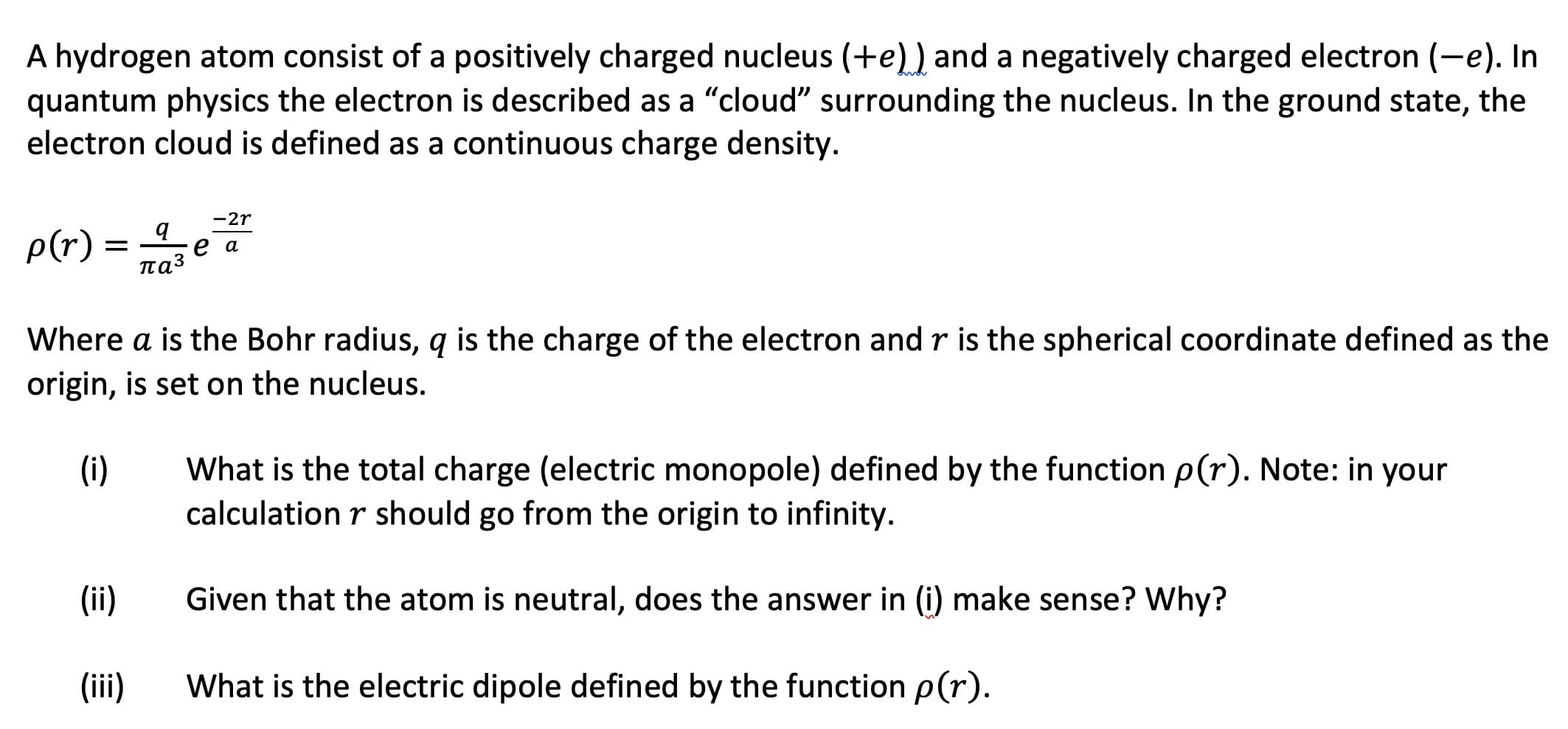A hydrogen atom consist of a positively charged nucleus (+e)) and a negatively charged electron (-e). In quantum physics the electron is described as a "cloud" surrounding the nucleus. In the ground state, the electron cloud is defined as a continuous charge density. -2r p(r) паз Where a is the Bohr radius, q is the charge of the electron and r is the sph origin, is set on the nucleus. erical coordinate defined as the What is the total charge (electric monopole) defined by the function p(r). Note: in your calculation r should go from the origin to infinity. (i) (ii) Given that the atom is neutral, does the answer in (i) make sense? Why? (iii) What is the electric dipole defined by the function p(r).
A hydrogen atom consist of a positively charged nucleus (+e)) and a negatively charged electron (-e). In quantum physics the electron is described as a "cloud" surrounding the nucleus. In the ground state, the electron cloud is defined as a continuous charge density. -2r p(r) паз Where a is the Bohr radius, q is the charge of the electron and r is the sph origin, is set on the nucleus. erical coordinate defined as the What is the total charge (electric monopole) defined by the function p(r). Note: in your calculation r should go from the origin to infinity. (i) (ii) Given that the atom is neutral, does the answer in (i) make sense? Why? (iii) What is the electric dipole defined by the function p(r).
Related questions
Question

Transcribed Image Text:A hydrogen atom consist of a positively charged nucleus (+e)) and a negatively charged electron (-e). In
quantum physics the electron is described as a "cloud" surrounding the nucleus. In the ground state, the
electron cloud is defined as a continuous charge density.
-2r
p(r)
паз
Where a is the Bohr radius, q is the charge of the electron and r is the sph
origin, is set on the nucleus.
erical coordinate defined as the
What is the total charge (electric monopole) defined by the function p(r). Note: in your
calculation r should go from the origin to infinity.
(i)
(ii)
Given that the atom is neutral, does the answer in (i) make sense? Why?
(iii)
What is the electric dipole defined by the function p(r).
Expert Solution
This question has been solved!
Explore an expertly crafted, step-by-step solution for a thorough understanding of key concepts.
This is a popular solution!
Trending now
This is a popular solution!
Step by step
Solved in 4 steps with 7 images
